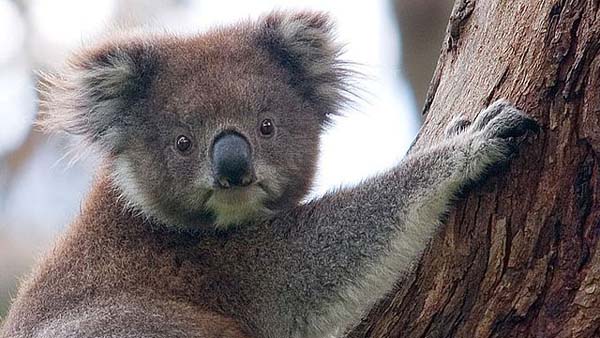Why Do Koalas Have Human Fingerprints?
Source: io9.com

Some accuse evolution of being pretty directionless. After all, the whole process involves random genetic mutations. But if evolution is just a toss of a million-sided die, why do so many animals turn out eerily similar? Nope, it’s not intelligent design. We take a look at the creepy look-alikes brought on by what biologists call "convergent evolution."
Could a koala frame you for a crime? Probably not you, but it could certainly frame your species. Koala fingerprints and human fingerprints are so alike that experts can mistake one for the other. Which makes no sense, since koalas and humans split off from each other between 125 and 150 million years ago. Our genetics haven’t crossed over since (although that would be one cute baby), we’re not the same size, we don’t do the same things, and yet the pads of our fingers look exactly alike. How did that happen?
Convergent Evolution
 With the emergence of epigenetics, we are getting hints that passing on certain characteristics to one’s offspring may not be entirely random. Lifestyle, stress, and nutrition in the previous generation can play a part in the next generation, and may even shape the species. Still, the heavy lifting of evolution has always been in random genetic mutation. Nature will throw whatever mistakes and quirks happen in the double helix at the wall and see what sticks. Convergent evolution happens because only a certain number of things stick to a certain kind of wall. There are only so many ways to climb a tree, live in desert sands, or go between the sea shore and the ocean. As niches get more specific, more specific methods are needed to fill them, and distinct animals will inevitable evolve specific similarities.
With the emergence of epigenetics, we are getting hints that passing on certain characteristics to one’s offspring may not be entirely random. Lifestyle, stress, and nutrition in the previous generation can play a part in the next generation, and may even shape the species. Still, the heavy lifting of evolution has always been in random genetic mutation. Nature will throw whatever mistakes and quirks happen in the double helix at the wall and see what sticks. Convergent evolution happens because only a certain number of things stick to a certain kind of wall. There are only so many ways to climb a tree, live in desert sands, or go between the sea shore and the ocean. As niches get more specific, more specific methods are needed to fill them, and distinct animals will inevitable evolve specific similarities.Convergent evolution can be prompted by any set of conditions. White snow brings out white plumage, fur, or scales, in all kinds of unrelated species. Similar predators will chase totally different species into the same trees, or under the same rocks, or force them to fight with the same poison. Any specific food source that isn’t already being depleted will bring out similar characteristics in different species. And, of course, much depends on how similar the species are in the first place. This is why placental mammals and marsupials are the poster species for both divergent and then convergent evolution.
When Marsupials Went Away and How They Came Back
Marsupials and placental mammals were identified as different species 125 million years ago, splitting off from a common ancestor via divergent evolution. They seem to have been working their way back towards each other ever since. Marsupials dispense with the last stage of pregnancy and simply give birth to a severely underdeveloped offspring. The baby animal works its way around to a pouch or protected spot on the marsupial and grows from there. Mammals came up with a special thing called the placenta, which nourishes the fetus in the uterus for much longer, and so they give birth to more developed babies. Although we think of marsupials as Australian, since that continent supports the most dominant and diverse marsupials, it’s likely that they got there from South America via an iceless Antarctica millions of years ago.
Placental mammals and marsupials found their way with similar genes to similar environments, and converged so spectacularly that they’ve been featured on intelligent design blogs ever since. Some would say that their similarities are more the results of parallel evolution, but considering the distance and the time that separate the animals, and the uncannily similar animals they developed into on separate continents, they do display a gift for convergence.
The flying squirrel has its marsupial equivalent in the flying phalanger. The anteater meets its match in the long-tongued ant-eating numbat. (These not only developed, distinct from other species, lost teeth, developed massive salivary glands, and pumped up their stomachs enough to eat ants. They became the same animal multiple different ways.) Placental mammals and marsupials even fill the same evolutionary nitches. A small forest-living kangaroo in Australia stores fruit by burying it, the way squirrels do in the rest of the world. Since trees with the most kangaroo-or-squirrel-accessible fruit benefit most from this, entire convergent ecosystems spring up. Each pair of animals aren’t within over a hundred million years and several oceans of each other, and yet each could pass - on sight - for close relations. But while marsupials and mammals are the most widespread examples of convergent evolution, they aren’t the weirdest.
[...]
Read the full article at: io9.com






















